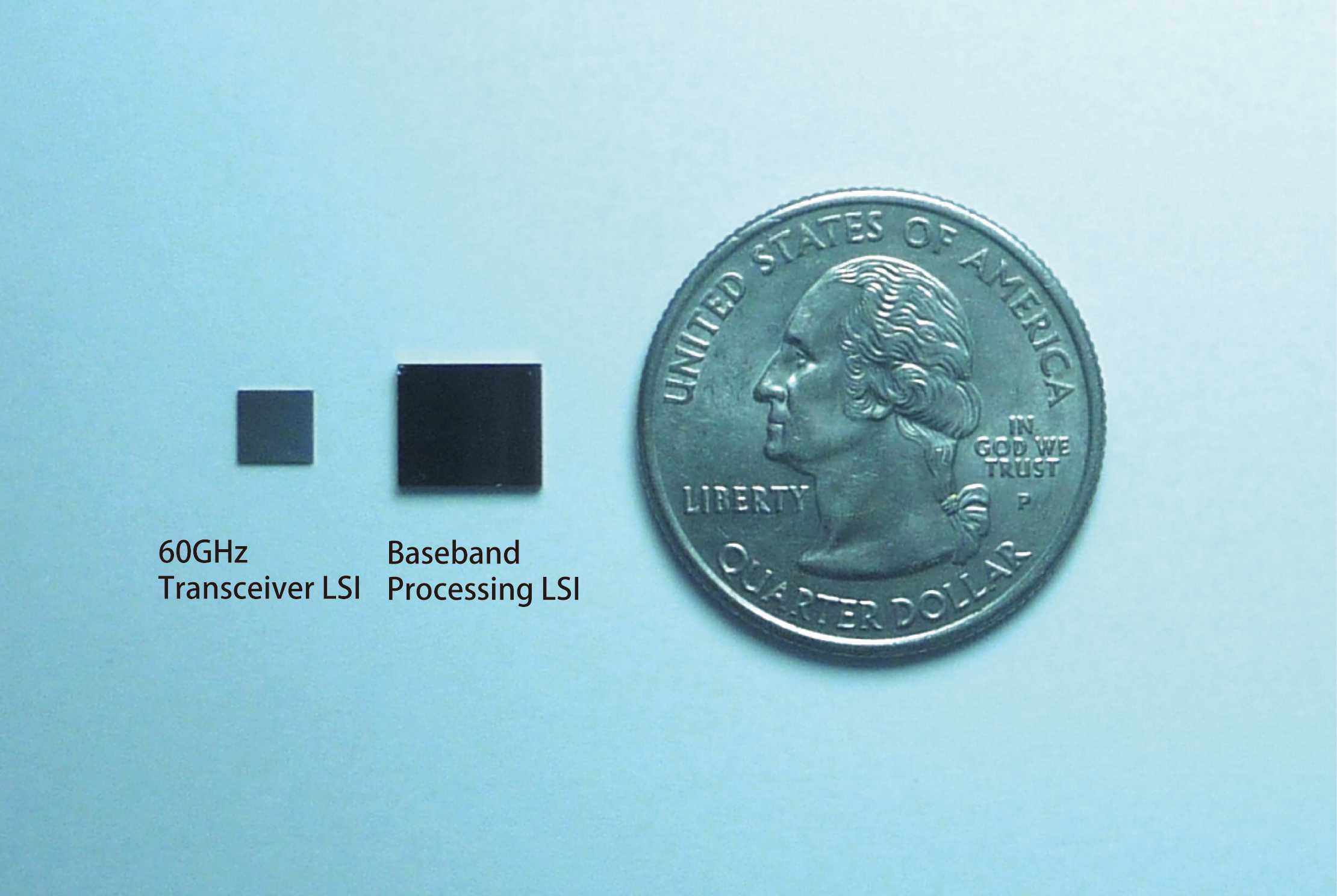Panasonic Develops "Less Than 1-Watt" WiGig Chipset
Panasonic said that it has developed the "industry's lowest power consumption chipset."
The device is designed to manage multi-gigabit millimeter wave wireless communication and enable communication between wireless devices using the WiGig specification.
Panasonic said that the chipset can be integrated in products such as smartphones, where it will consume less than 1 watt. The technology would allow a user to transfer a 30 minute HD video within 10 seconds, the manufacturer stated.
The chipset includes a 60 GHz transceiver LSI as well as a baseband processing LSI with Media Access Control (MAC) packet processing capability. Panasonic claims that the chipset will run at below 1 watt even when it performs at a "high" data rate of 2.5 Gbps. The low power consumption was achieved by using a "low power consumption MAC packet processing technology" and "high-speed control circuits to keep the processor clock frequency low."
There was no information when the chipset will go into mass production.
Get Tom's Hardware's best news and in-depth reviews, straight to your inbox.

Douglas Perry was a freelance writer for Tom's Hardware covering semiconductors, storage technology, quantum computing, and processor power delivery. He has authored several books and is currently an editor for The Oregonian/OregonLive.
-
mauller07 While i do enjoy the speed improvements, they still need to work on implementing full duplex wireless systems, is good they are improving speeds but when its still based on a hub principle your still sharing that bandwidth between all the clients on the node.Reply -
rumandcoke it is hilarious that chip manufacturers boast about data transfer speeds while wireless providers do everything they can to make sure your downloads are throttled and cost a fortune.Reply
Maybe useful outside of the US though ? -
millerm84 rumandcokeit is hilarious that chip manufacturers boast about data transfer speeds while wireless providers do everything they can to make sure your downloads are throttled and cost a fortune.Maybe useful outside of the US though ?Reply
Useful inside of a corporate LAN. Our company runs gigabit to the desktop even though we only have a bundled T1 connection to the internet. Inside the LAN/WAN (electric company we have fiber between sites) you can transfer at full speed which is good for our hosted programs but makes no difference for internet speed. -
CaedenV rumandcokeit is hilarious that chip manufacturers boast about data transfer speeds while wireless providers do everything they can to make sure your downloads are throttled and cost a fortune.Maybe useful outside of the US though ?This is an 802.11 standard, it is not a cell phone standard, so data caps are completely irrelevant here. And if you are talking about normal internet connections, if you live within a few miles of a city then the internet is pretty quick (especially now with so much fiber being installed and finally getting off of the old copper networks :) ), but Wireless G is still faster than most internet connections throughout the world. Wireless N and wiGig are for internal networks where you have a lot of heavy use on a centralized server (media server for tons of people, business file server, or a media production server).Reply
At any rate, this article puts to rest some of the fears about wiGig killing the battery life of mobile devices, because it was originally supposed to be a portability killer, which is why we have not seen it yet.
mauller07While i do enjoy the speed improvements, they still need to work on implementing full duplex wireless systems, is good they are improving speeds but when its still based on a hub principle your still sharing that bandwidth between all the clients on the node.Wireless is not like copper. It is not like you can isolate a particular frequency to go in a particular direction. Yes, there are some tricks to have different devices on different channels, but even then it does not solve the hub-like nature on a per channel basis. If you get a bunch of people shouting in a room then you end up with a garbled mess, and that is exactly what wireless is. Wired is more like a private conversation... next to a fireplace... with a cup of coffee... ... where's my coffee......
Anywho, Wireless was never meant to be the sole connector of all devices, it is supposed to supplement a wired network for slower portable devices, and wireless will always get slower with the more devices connected, and the more networks in the same area. There is simply no way around it. Things will always get better using different ways of changing the signal so that there is less and less cross-talk between devices, but it will never be perfect unless we can get all devices on a point-to-point connection like we can with wired. -
mauller07 caenenv, thank you for elaborating how wireless works for other, although i know how it works myself, i was merely stating that even with improvements in bandwidth wireless is still limited because of the way the technology works.Reply -
jamie_1318 ^ you still are, and so am I. Wired is much faster for the same Mb/s rating due to overhead and lag.Reply
